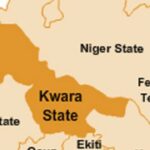
The variety would be in market next year
There are reports about a new cotton variety developed by IAR, can we know more about this development?
Recently, we have released two BT cotton varieties. These varieties are high yielding. Our current varieties maximally yield 1.5 tons per hectare. One of the new varieties is yielding 4.1 tons per hectare and the other one is yielding 4.4 tons. This is a remarkable achievement in the sense that it would revolutionalised the cotton industry in Nigeria.
When the present administration came in, the President was very passionate about reviving the cotton, textile and garment industries. He set up a committee to set the pace of the revival of these industries. Several cities of Nigeria are what they are in terms of growth because of cotton and textile industries. Kaduna is one example. Kaduna city is largely inhabited by cotton workers and their families. However, this industry is now moribund. This is because the textile and cotton industries are down.
One of the ways of reviving cotton production is breeding improved cotton varieties. All over the world, the major cotton producing zones like Sudan thrive through production of BT cotton. Today, Sudanese farmers produce one hundred per cent BT cottons, and because of that cotton production is assisting their growth.
If you go to places like India and Bangladesh where textile and garment industries are employing millions of people; they rely on BT cotton production.
It is because of the foregoing when a company from India, Mahyco, came to collaborate with IAR to develop commercial BT cotton; we took that enthusiastically. We felt that this would assist the development of our country and our farmers would make money. They brought four varieties, which we tried across Nigerian states of Adamawa, Gombe, Bauchi, Katsina, Kebbi, Niger, Nasarawa, Abuja, Oyo and Ogun. We found them exceedingly producing higher yields than our own varieties.
We accepted to experiment these varieties from India, because our institute has the genetic mandate for the improvement, production and marketing of cotton in Nigeria. We tested these new varieties and they did very well. One produced an average of 4.1 tons and the other one produced 4.4 tons per hectare.
Apart from the yield, these cotton varieties have quality. They are called long staple cotton, which are cottons that can be used in five textures. They are used in producing textile materials that are of high quality like what the women call English, Super and Holland waxes. Our textile industries are looking for these cotton varieties. Additionally, usually in cotton production, the major biotic traces are diseases and inset attacks. These new varieties can resist some of those traces.
These varieties have some in-built pest resistance. The beauty of this is that it would reduce the cost of producing cottons. Cost of spraying insecticides and pesticides can be saved, as cotton requires many sprays of pesticides. This would also help in sustaining the environment. These chemicals have some residuals effects on human, because they are poisons and this is why they kill the insects.
What happened after the trial?
The National Bio-safety Agency that is vested with the responsibility of ensuring that any genetic material that is brought into the country is safe have certified that these BT cottons are safe for Nigeria after we have submitted to them. So, we now have the clean bill to release and commercialise them.
Based on that certification, we took them to the National Variety Release Committee (NVRC), which is also a committee that consists of all stakeholders like scientists, seed industry, bio-safety agency, among others. When they saw the excellent performance of the varieties, they allowed us to release and commercialise them in collaboration with Mahyco Seed Company of India. The company would be responsible for the commercialisation of the varieties.
Can we say that these varieties are foreign and were not actually developed by IAR……
Yes, they are from India. In improvement, there are two ways to do that. One, when you get improved varieties, it is the duty of scientist to try them in his country, adopt them to his growing condition and when he finds them suitable he releases them.
Two, you can bring the improved varieties and make some scientific crosses. For example, you bring in an improved variety from a certain country and you realised that because of the soil or climatic conditions of the country it is coming it may not be adoptable here but it has some good threads, you can transfer those threads to the varieties that are adoptable here.
For example, if after the trial we discovered that they are not adoptable here but they have these BT gens that are useful to us, we can transfer these threads to our varieties and release them.
What input did you make in these varieties that would convince Nigerian farmers that these varieties are now Nigerian?
In science when you get varieties, we subject them to breeders. Therefore, we have to characterise the varieties. We have done so. Testing the varieties does not mean just planting them. It is done scientifically. There is what we call experimental design; otherwise you would not be able to determine these varieties are better than our own varieties. Therefore, the varieties went through all our scientific methods and protocols before we became convinced that they are more effective than our own. We have entomologists led by a Professor and other experts that worked on these varieties before they were released.
We should also know that BT is gen in cotton that resists insects. This is why this cotton is different from our own. It is that resistance that confers this cotton superiority in yield. These varieties are hybrid and the BT distinguishes them with others. This is why we are also coming up with BT cowpea, because one of the major problems of our cowpea is insect. In cowpea, we brought in just the gen and transferred it into our cowpea, and this research has taken almost 10 years.
The research on cotton did not take long because we already had cotton that was incorporated with the gens. This facilitated the research and this is why this research just took two years.
Farmers need to know what they need to successfully produce BT cotton?
Apart from the BT, these varieties are cotton. So, all agronomic practices should be observed. Cotton is usually planted on or before the month of June. Late planting reduces yield. Under no circumstances should a farmer exceed June before planting his cotton, because it is a crop that stays in the field for long. It takes between 140 and 150 days to mature. It is difficult for farmers in Kaduna, Katsina and other states to have four or five months of effective rainfall. Therefore, farmers have to plant their cotton immediately the rains establish.
After ploughing and harrowing, a farmer makes his ridges in the region of standard spacing of 75cm. A farmer plants his cotton at the space of 30 to 40cm apart. By this, a farmer needs 15 to 20kg of seed per hectare and seed germination should be at the rate of 80 per cent. This is to say a farmer has to be extra careful in selecting his seed.
Cotton needs only NPK 15:15:15 and about five bags are needed per hectare. Weeding should be done regularly. Farmers should not leave their cotton in weeds. Farmers can use chemical to kill the weeds so that his cotton can grow without much stress. If successfully followed all these processes what would be left is harvesting. Harvesting of cotton is usually done by handpicking. But there are mechanical means of harvesting cotton. Our engineering unit is developing mechanical cotton pickers to allow farmers to easily harvest their cotton and reduce loss.
How does the BT cotton going to change the economic base of farmers?
Any farmer that is able to make four tons of cotton per hectare; he is in business. This makes farming real business not just subsistence farming. Moving from 1.5 tons to 4 tons is a remarkable jump. With this development, farmers would be smiling to the banks.
Are these new cotton varieties in the market?
No, we have not started releasing them to the farmers. When we say the varieties are released, scientifically we don’t mean to the farmers. Before any variety can be taken to farmers, it has to be officially released by the National Variety Release Committee. If you travel to Sudan, for example, get a cotton seed and bring it to Nigeria and start using it, you are involved in an illegal act. For farmers to get any new variety, it has to be tested and convinced by the research institute that it is suitable for Nigeria.
IAR, for example, has the genetic mandate for the improvement, production and marketing of maize, cowpea, groundnut, sorghum, cotton, jathropa, Artemisia, sunflower and castle. So, any variety of these crops that would be used by Nigerian farmers have to be researched upon by IAR and when we are convinced that these varieties are better than the present varieties, then we take them to National Variety Release Committee. It is when the NVRC is convinced that the new varieties would add value to the agricultural sector that they would give the go ahead for the supply of the new varieties to farmers.
Then, when would the farmers likely going to get these new cotton varieties?
Hopefully, early next year. Apart from the BT cotton, IAR has been working hard to improve the varieties that our farmers use in order to increase their production. IAR has been able to produce not less than 52 varieties of maize including the ones that mature within 60 days as well as the ones that contain protein and Vitamin A. We have also produced draught and striger tolerant maize. We have made inroads in the areas of sorghum, cowpea, jathropa among many other efforts.



